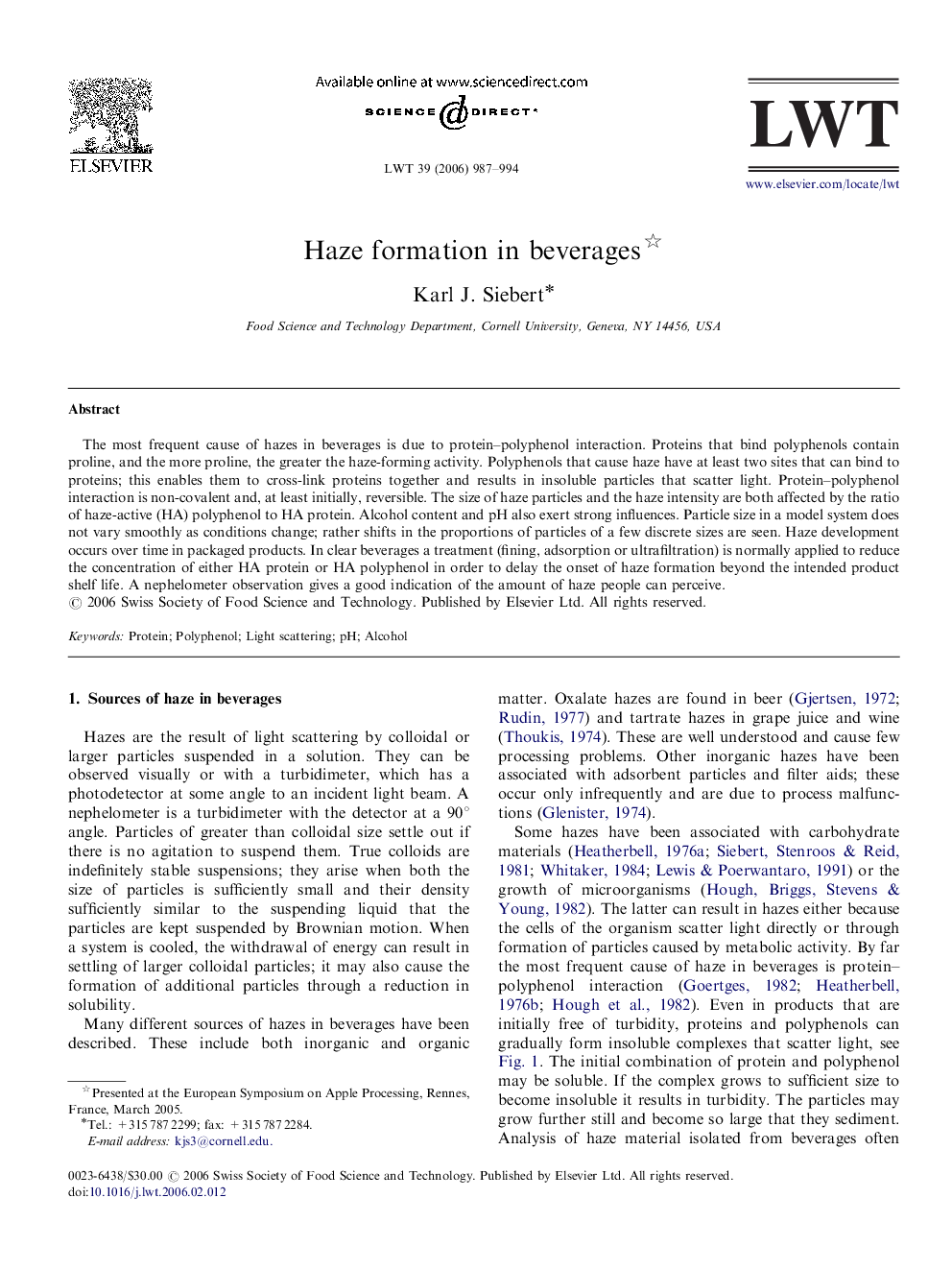| کد مقاله | کد نشریه | سال انتشار | مقاله انگلیسی | نسخه تمام متن |
|---|---|---|---|---|
| 4565581 | 1330989 | 2006 | 8 صفحه PDF | دانلود رایگان |

The most frequent cause of hazes in beverages is due to protein–polyphenol interaction. Proteins that bind polyphenols contain proline, and the more proline, the greater the haze-forming activity. Polyphenols that cause haze have at least two sites that can bind to proteins; this enables them to cross-link proteins together and results in insoluble particles that scatter light. Protein–polyphenol interaction is non-covalent and, at least initially, reversible. The size of haze particles and the haze intensity are both affected by the ratio of haze-active (HA) polyphenol to HA protein. Alcohol content and pH also exert strong influences. Particle size in a model system does not vary smoothly as conditions change; rather shifts in the proportions of particles of a few discrete sizes are seen. Haze development occurs over time in packaged products. In clear beverages a treatment (fining, adsorption or ultrafiltration) is normally applied to reduce the concentration of either HA protein or HA polyphenol in order to delay the onset of haze formation beyond the intended product shelf life. A nephelometer observation gives a good indication of the amount of haze people can perceive.
Journal: LWT - Food Science and Technology - Volume 39, Issue 9, November 2006, Pages 987–994